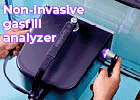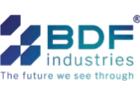The new design of the annealing lehr enables the cooling capacity to be adapted exactly to the requirements, thus providing a flexible annealing point.
The modular design allows for optimized process control as well as simplified maintenance and operation.
This new technology thereby creates an even better process simulation and is already prepared for further digitalization measures.
Controlled cooling in the annealing lehr is one of the crucial process factors on the way to the ideal glass quality. Grenzebach's new annealing lehr enables to adapt the cooling capacity exactly as required. Individually controllable sections are a major step forward and increase flexibility at the annealing point. This provides users with new options to achieve the ideal glass tension for a wide range of production scenarios. The new design and improved cooling technology thereby offer powerful added values and also result in significantly reduced energy consumption. This also includes increased occupational safety and optimized maintenance possibilities.
Linear cooling curves crucial for glass quality
In float glass production, the glass is fed to the annealing lehr, which can be up to 200 meters long, via the dross box after the tin bath. The glass ribbon cools down from about 600 °C to about 60 °C. In this production phase, the decisive factor is the temperature curve around the so-called annealing point, which lies in the temperature range between 505 °C and 525 °C, depending on the specific composition of the glass. At the annealing point, the glass changes from elastic to solid state. Ideally, the cooling curves before and after this point should be as linear as possible. The reason for this is that the correct temperature profiles and cooling rates are crucial for the glass tension. If the tension is too high, cracks might appear in the glass ribbon. If the stresses are too low, though, the glass cannot be processed sufficiently well later on.
With the new generation of annealing lehrs, Grenzebach increases the flexibility at the annealing point and thus offers customers new possibilities to achieve the perfect glass tension for all kinds of production scenarios. Based on the 40 years of experience of CNUD EFCO, Grenzebach has completely redesigned the annealing lehr.
Aims of the new design were:
Higher flexibility at the annealing point during production regarding tonnage and glass thickness
A modular construction of the annealing lehr with improved process control
Improved possibilities for simulations to optimize the annealing lehr during the project engineering phase
Reduced energy consumption and emissions through highly efficient cooling and lower heat losses
Optimizations at the hot end: advantages of the new annealing lehr
The new annealing lehr allows for a cooling capacity that is precisely adapted as required. The individually controllable heating and cooling sections enable the process to be controlled more precisely and to react flexibly to changes. Shorter modules lead to shorter control zones, so that the process can be responded to even more precisely. Thus, the annealing point is kept flexible through adapted temperature curves. In addition, the controllable cooling can also be used to optimize the distribution of the tension across the glass ribbon. The contraction of the glass during cooling is compensated by segmented drive trains with controlled servo drives. The risk of scratches is significantly reduced. These changes result in substantially increased glass quality and, at the same time, drastically reduced energy consumption. These energy savings are due to a highly efficient cooling process and optimized insulation. The optional heat recovery also contributes to energy efficiency, which is further increased.
With the new design, production is now much more flexible with regard to tonnage and thickness range.
Easy maintenance – changing rollers during operation
The innovative drive design makes maintenance of the annealing lehr much easier and also offers increased protection of personnel during maintenance thanks to innovative protective covers – also during operation. Users also benefit from a greatly reduced noise level and intuitive system operation.
Eyes on the future – prepared for further automation and digitalization measures
The design of a float glass line is complex. Far-reaching challenges need to be addressed in order to meet growing customer and environmental demands in the future. A virtual, digital image opens up extended possibilities for greater planning and process efficiency. "We are working intensively on the topics of data science and process models", says Markus Gruber, Senior Vice President Business Unit Glass at Grenzebach. "Our aim is to simulate and understand processes better in order to shorten the project engineering phase, reduce investment costs and increase production efficiency."
The new annealing lehr is already perfectly prepared for future adjustments: Featuring considerably more sensor technology, the annealing lehr enhances the data situation and renders even more accurate simulation and process control possible. The interface to higher-level control systems and the associated digitalization potential are also included.


























